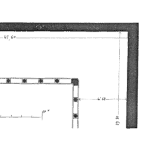
Richard Beer and James Reyes-Picknell – long-time friends and colleagues like to talk about issues of interest to the asset maintenance management community. Between the two of them, there is nearly a century of experience in the field. Both have seen and lived the mistakes and lessons learned that we call experience.
[Read more…]











 Ask a question or send along a comment.
Please login to view and use the contact form.
Ask a question or send along a comment.
Please login to view and use the contact form.